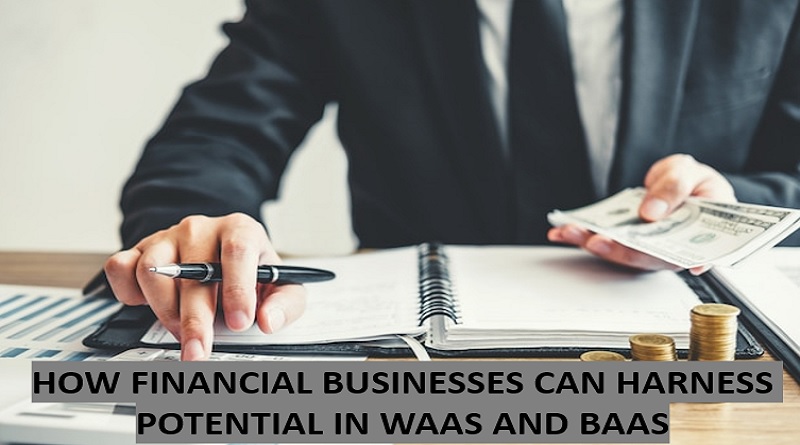HOW FINANCIAL BUSINESSES CAN HARNESS POTENTIAL IN WAAS AND BAAS
While the software as a service (SaaS) business model has become a staple for organizations, the benefits of wallet as a service (WaaS) and banking as a service (BaaS) for financial businesses often go unnoticed. This article is meant to shed some light on how banks, mobile network operators, and/or retailers may choose to capitalize on the WaaS or BaaS model for business growth while also breaking down some common uses of WaaS.
SaaS, WaaS, Or BaaS: What’s The Difference?
Digital transformation comes in many ways. SaaS seems to be the most frequently applied acronym for cloud-based services. According to Statista, the SaaS global market accounted for almost $146 billion in 2021. SaaS includes the delivery of all kinds of mobile and web applications, making them available for users on a service basis.
SaaS is a relatively new way of providing cloud-based services to business users on a subscription basis. Unlike conventional software installed on-premises, SaaS products are centrally hosted. This allows businesses to opt for more cost-efficient cloud software instead of forking over server infrastructure. The SaaS model gained much traction in recent years as many IT companies added it to their product portfolio.
While SaaS functions as a blanket term, WaaS has also emerged as a specific delivery model for businesses. This is often confused with banking as a service (BaaS), but these two terms should not be conflated, as there are some important distinctions between these models.
Simply put, when banks go digital, they choose BaaS. Clients are then able to access and manage online assets via API connections. To integrate BaaS into its business operations, a bank can choose to hire an in-house team or bring in external expertise.
WaaS is a horse of a different color. While BaaS is good at improving banking operations, WaaS is designed to equip businesses with digital financial services. In simple terms, BaaS is bank-focused while WaaS is business-oriented. Figuratively, WaaS can be seen as going shopping with your favorite reusable tote bag, while BaaS is like buying a bag from the mall.
In many ways, the WaaS model can address the ever-growing needs of various financial companies that want to have reliable ready-to-use digital services at scale. So, let’s explore what a WaaS business model is and what it can offer.
WaaS Offerings
WaaS is a business model that can enable companies to digitize their business value chain through the seamless integration of various digital financial services at scale. In addition, the WaaS delivery model allows financial businesses to start any B2B quickly and efficiently or B2C finance project online at a lower cost than with traditional out-of-the-box software suites.
Depending on the fintech provider, WaaS can extend to a wide range of digital financial services including e-wallets, digital cards, mobile-based points of sale (mPOS terminals), and cloud-based reward programs for customer loyalty, international remittances, loan management, and more.
This said, companies do not necessarily need to opt for all the WaaS options. Businesses can start from scratch or embed any digital service into a current infrastructure. In this way, WaaS can help test the waters and reach new audiences.
Benefits That May Make WaaS The Right Choice For Your Company
Starting your digital financial business with WaaS can be quite rewarding. First, there is no need to pay a large sum of money for a software package that may not fit easily into your existing business infrastructure. But perhaps more importantly, WaaS lets you follow the pay-as-you-grow approach. It means you can easily add some other services of your choice and pay a fixed price until you decide to scale up.
Among the potential advantages the WaaS delivery model can offer to financial businesses, I’d highlight the following:
- Easy to launch. WaaS is a quick way to go digital.
- White-label. Most ready-made software goes by its brand name, leaving you fewer chances to promote your own business as such. At the same time, if you decide to hire an outsourced team, it can end up taking the same amount of time to develop a web or mobile e-wallet app from the ground up.
- Service range and customization. You can test the waters with one or more WaaS options to see how well they perform in your business niche.
- KYC compliance. For ready-made software with its architecture etched in stone, it isn’t as easy to adapt services to meet every region’s law and regulation. Service-based models showcase much more flexibility here.
Potential Concerns When Considering WaaS
You should also keep in mind, though, that WaaS might be the wrong option for some use cases. Here are some notable types of businesses for which WaaS is not the right choice:
- Large-scale banks and retailers. For large enterprises seeking to create their stand-alone app with licensing rights to modify it, subscription-based software would not be the best option for investment.
- Most businesses in developed countries. Mature markets necessitate integration with all banking services. This is not a concern for regions where financial inclusion is still an issue.
- On-premises supporters. Due to security concerns, some businesses still have little confidence in cloud-based solutions. These companies may wish to invest in on-premises servers they can own and control.
At the end of the day, BaaS and some other out-of-the-box digital platforms will prove the best fit for some enterprise-grade businesses that largely operate in mature markets and require watertight security.
The Bottom Line
Both the BaaS model and the WaaS model are easy to launch and cost-efficient when compared to ready-made software packages. Both offer distinctive tools for digital transformation to a wide variety of financial industry stakeholders, from wallet operators to telecoms to chain retailers. Depending upon your circumstances, either model may prove the best option to help your company leverage technology to reach emerging markets, implement your online payment infrastructure, reinforce engagement, and more.








